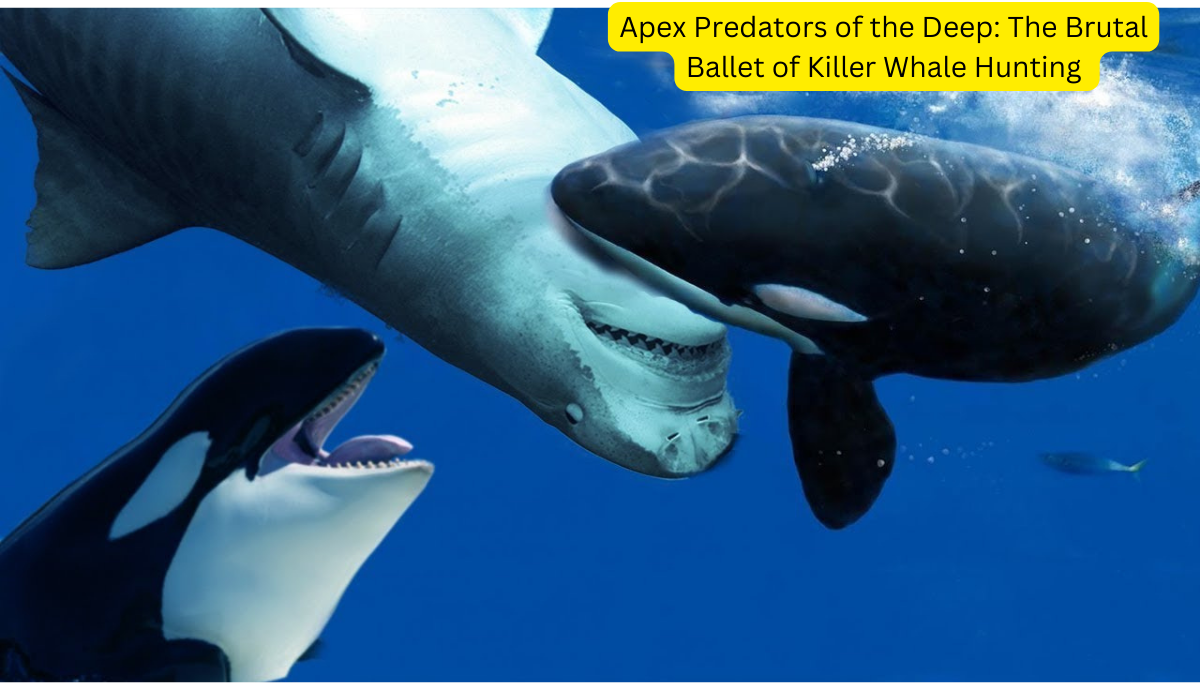Imagine a pod of sleek, black-and-white orcas slicing through the ocean with incredible speed. Their powerful bodies surge through the water, driven by a singular purpose: the hunt. Killer whales, also known as orcas, are at the top of the marine food chain for a reason. Their hunting strategies are as impressive as they are brutal, a testament to their intelligence and teamwork.
So, how exactly do these magnificent creatures take down prey much larger than themselves? Buckle up, because we’re diving deep into the world of killer whale hunting, a display of coordinated teamwork that’s as fascinating as it is awe-inspiring.
Masters of Teamwork: Specialization Within the Pod
Unlike many solitary hunters of the sea, killer whales operate in close-knit family groups called pods. These pods can range from a few individuals to upwards of 30, and within this group lies a fascinating level of specialization. Different members take on specific roles during a hunt, ensuring maximum efficiency.
Think of it like a football team. You’ve got the scouts, the blockers, and the star players. In a killer whale pod, some members might be responsible for identifying prey, while others act as flankers, herding and maneuvering the target. The most experienced whales, often matriarchs or dominant males, might take the lead, strategizing the attack and delivering the final blows. This specialization allows the pod to target a wider variety of prey and adapt their tactics based on the situation.
A Diverse Hunting Arsenal: Strategies for Every Meal
The beauty of killer whale hunting lies in its versatility. These intelligent creatures aren’t limited to one approach. Their hunting strategies are as varied as the prey they target, showcasing their remarkable adaptability.
The Crash Dive: When hunting seals basking on ice floes, killer whales employ a terrifying technique called the “crash dive.” Imagine a synchronized dive bomb by a team of torpedoes. The whales take turns accelerating towards the ice, creating a massive wave that can topple unsuspecting seals into the water, making them easy pickings.
The Breach and Strand: This strategy is a masterclass in teamwork and planning. Killer whales will work together to herd a pod of dolphins or seals towards the shore. One or more whales then launch themselves onto the beach, stranding the prey and making them vulnerable.
The Tail Slap: For some prey, like sharks, a well-placed tail slap can be a game-changer. A powerful blow from an orca’s tail can stun or even kill smaller sharks, allowing the pod to easily secure their meal.
Echolocation and Communication: Killer whales are masters of echolocation, using clicks and whistles to map their surroundings and locate prey. This allows them to hunt even in murky depths or during night-time. Additionally, their complex vocalizations likely play a crucial role in coordinating attacks and communicating strategies within the pod.
Targeting Weaknesses: Exploiting the Prey’s Vulnerabilities
One of the hallmarks of a successful killer whale hunt is their ability to identify and exploit a prey’s weaknesses. For example, when hunting grey whale calves, they target the mother-calf pair. By relentlessly chasing the mother, they tire her out, making it harder for her to protect her offspring. Once exhausted, the calves become vulnerable, allowing the orcas to isolate and take them down.
Similarly, when hunting seals, they might target injured or young individuals, increasing their chances of a successful hunt. This strategic targeting ensures they expend less energy and maximize their chances of a satisfying meal.
The Power of Family: Cooperation Makes the Hunt a Success
The success of a killer whale hunt relies heavily on cooperation within the pod. Their strong social bonds and complex communication allow them to work together seamlessly. Imagine a group of friends playing a complex video game, each member fulfilling a specific role for the team to succeed.
This cooperation extends beyond the hunt itself. Sharing food within the pod ensures that even younger or injured members are well-fed. This social structure is crucial for the survival and well-being of the entire group.
Conclusion: A Force to be Reckoned With
Killer whales are a force to be reckoned with in the ocean. Their intelligence, teamwork, and diverse hunting strategies make them apex predators. The next time you see an orca gliding through the water, remember the coordinated ballet that unfolds beneath the surface, a testament to the power of teamwork and the cunning of these remarkable creatures.
FAQs (H2)
1. Are killer whales dangerous to humans?
Killer whales rarely attack humans in the wild. There have been very few documented incidents, and most interactions between humans and orcas are peaceful. In fact, killer whales are often quite curious about humans and may even approach boats.
2. What is the biggest threat to killer whales?
The biggest threats to killer whales are human-related. Pollution, particularly from industrial waste and plastics, can contaminate their food sources and harm their health. Additionally, entanglement in fishing gear can cause serious injuries and even death.
3. How intelligent are killer whales?
Killer whales are highly intelligent animals. They have complex social structures, use tools, and display problem-solving skills. Their brains are larger than those of most other dolphins and whales, suggesting a high level of cognitive ability.
4. Do killer whales hunt together all the time?
While cooperative hunting is a common strategy for killer whales, they may also hunt alone depending on the prey and the situation. For smaller prey, a solo hunt might be sufficient.
5. What are some of the sounds killer whales use to communicate?
Killer whales have a complex repertoire of vocalizations, including clicks, whistles, and calls. These sounds likely play a role in everything from echolocation and hunting coordination to social bonding and communication within the pod.

